As the local population ages in Japan’s countryside, a way of life begins to disappear. Travelers return to Japan’s historical highways, such as the Nakasendo, to catch a glimpse into the past before they are gone are discovering the natural beauty and treasures that lie along these ancient routes.
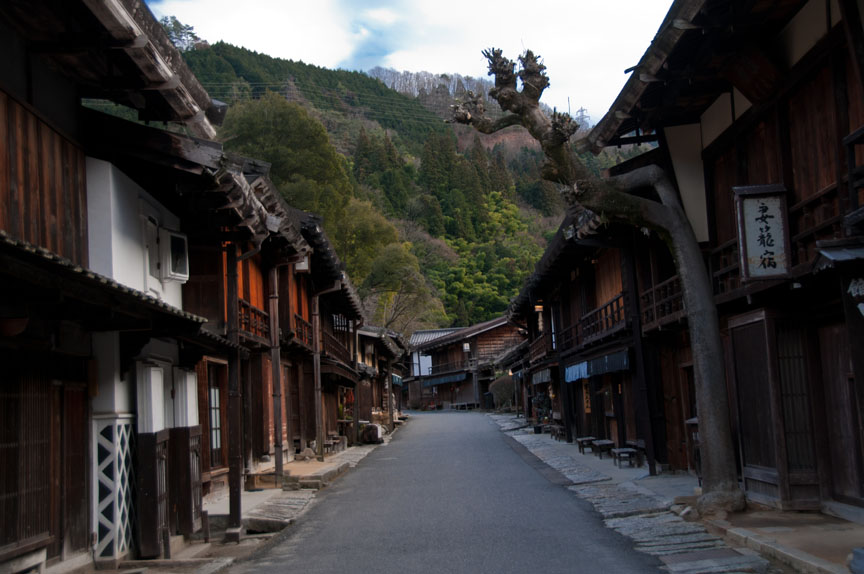
Steam rises into the frigid night air. Few locals brave the below-zero temperature, yet here we are donned in yukata with feet dangling in the heated waters of the ambitiously named Kiso River Hydrophilic Foot Spa. Despite the name’s protests of grandeur, it is an illusion consisting of an open-air water channel with a covering to protect against the elements. The hot waters though are no illusion, and they comfort the soles of our feet after a nine-kilometer walk along the Nakasendo.
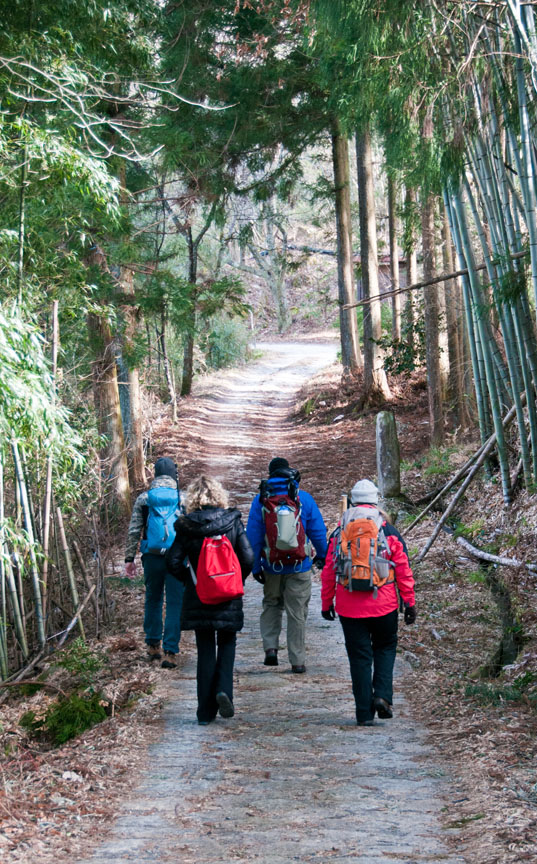
“Nakasendo” literally means “central mountain road.”
It was one of five routes established during the Tokugawa Shogunate (1600-1868), also known as the Edo Era. It incorporated several older paths and wound its way through the mountains between Kyoto, where the Emperor resided, and the real powerbase of Edo—modern day Tokyo—home to the Tokugawa shogun.
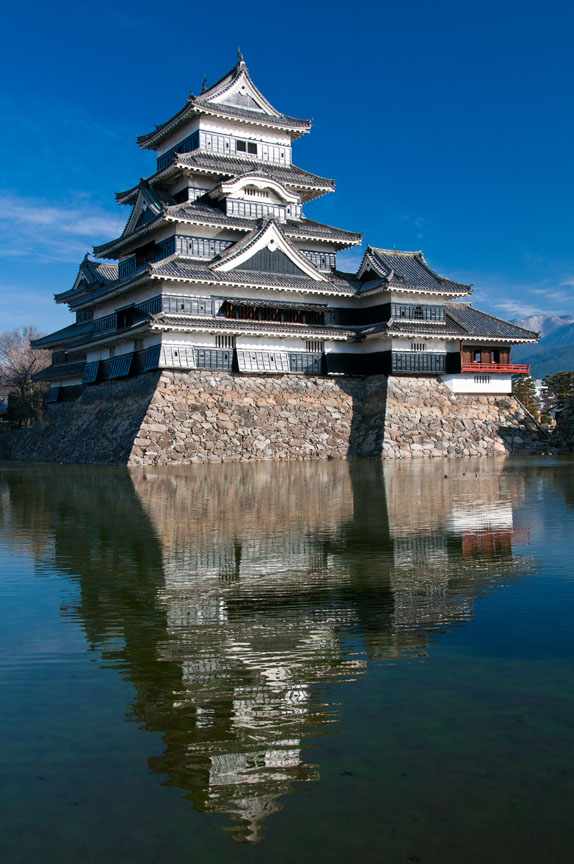
Under the paranoid dictatorial system, regional lords (daimyo) were obliged to make an annual journey using the highways to Edo for a period of residence in a system called sankin–kotai. After the Meiji Restoration where power was returned to the name of the Emperor and sankin–kotai ended, the highway system soon fell into disuse under the subsequent modernization of Japan.
Today hikers are once again taking to the path, and tourists are breathing life into an area that for decades was in decline. For Hara, a sprightly septuagenarian, it is a return of fortune for his family. The eighth generation owner of Shinchaya, a small inn, is once again benefiting from passing trade.
“It’s gone full circle. There was about an 80-year period when we had to find other means of income,” says Hara. For his father and grandfather, that meant turning to farming and hunting for income, activities Hara still practices, providing “slow food” for the guests of his inn.
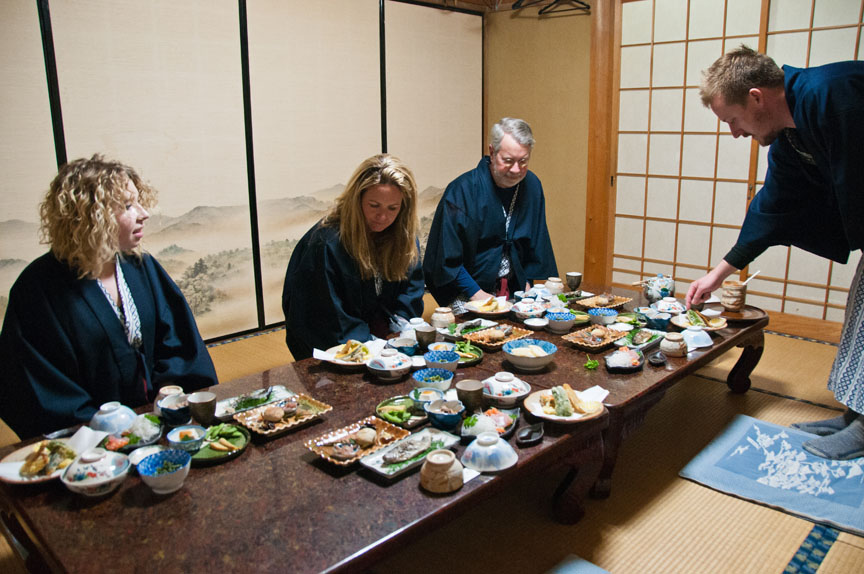
Thirty years ago, a hiking boom meant a steady stream of customers. With more than 20 fields still carefully cultivated, parties such as ours can enjoy everything produced locally right down to the tea and rice. Hara though worries, as many of his hunting group are older than 80, the few young people remaining are not interested in the old ways, and the number of animal pests is increasing. Wild boar may soon be off the menu.
We join the Nakasendo on the outskirts of Nakatsugawa in Gifu Prefecture, one of 69 former post towns on the route. Here a kosatsuba notice board greets visitors laying out the regulations of those traveling this way. Many of these are rules outlawing Christianity; others relate to smuggling of firearms and what kind of clothes the various classes were permitted to wear.
Punishment for breaking most of these was a summary execution. Life in the early Edo Period was strict, and most people could travel no farther than the next post town without an official sanction. Luckily, today all that is required are stout walking boots as we follow the route through the Kiso Valley.
On the climb to Shinchaya, we are aided by one of the longest stretches – 800 meters – of remaining ishidatami (stone slabs laid upon the route). Much of the original route was mud tracks, but these days it has been covered with asphalt in stretches. Day two takes us through the delightful post town of Magome. In winter few tourists visit, and the winding cobbled street is largely deserted much in the same way as its most famous son Shimazaki Toson would have seen it.
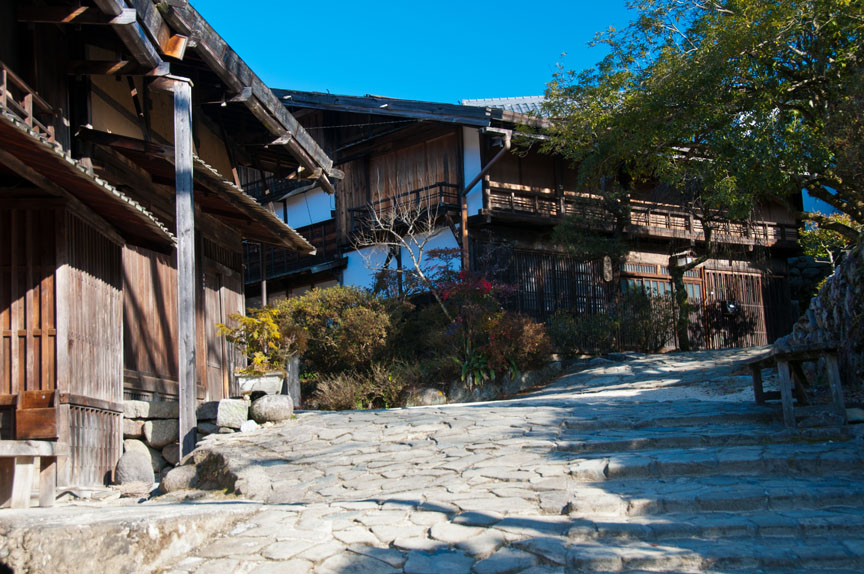
Immortalizing the Nakasendo in novels that were often thinly veiled autobiographies, he told of the decline of importance of the route in books such as “Before the Dawn.”
As we crest the Magome Pass and enter Nagano Prefecture, conditions take a turn for the worse, and we change into snow cleats and use walking poles for the descent through a forest of mostly cypress and cedar trees made treacherous by ice and snow. On our way to Tsumago, we pass by the Odaki and Medaki waterfalls.
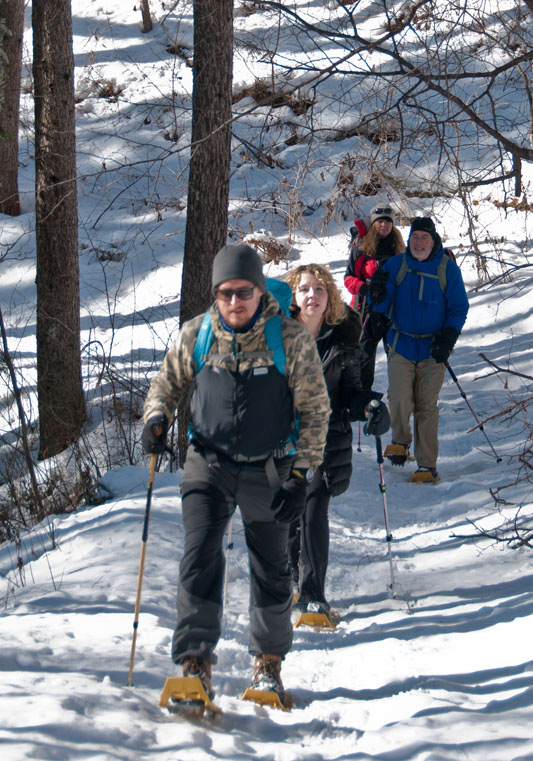
Our guide, Ben Corbett of Walk Japan Tours, is fluent in Japanese with encyclopedic knowledge of Japan and its culture. He regaled us with the tale of samurai Miyamoto Musashi who was forced to choose between the way of the sword and a certain young lady. They meditated under the respective waterfalls, which may be the reason for their names. Musashi went on to become a great warrior.
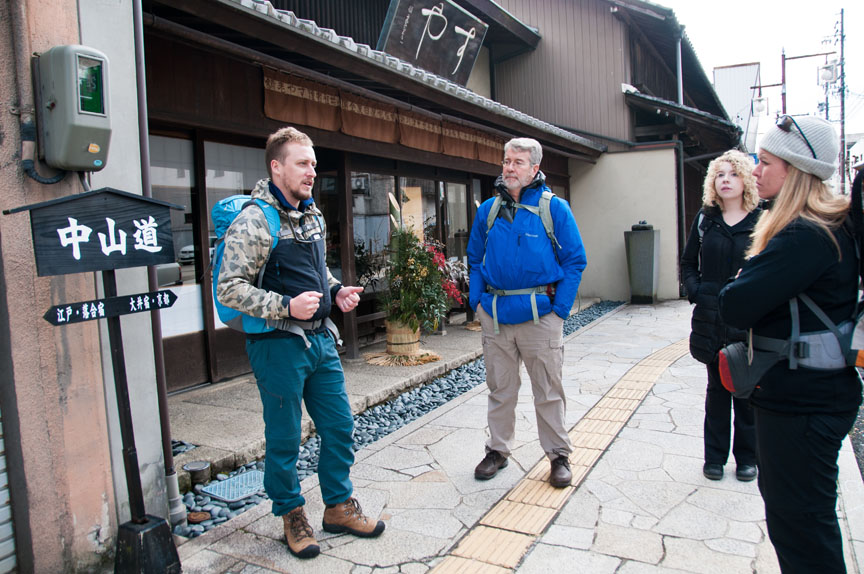
The next morning we stroll into Tsumago, another of the well-preserved post towns. Each of these along the route was obliged to provide various levels of accommodation to travelers. Honjin was the highest level, reserved for passing daimyo and other high-ranking officials who would come for the night surrounded by high walls.
Next was the waki–honjin, for less important daimyo and officials. In Tsumago the waki–honjin dates back to 1877 and is made of high-class hinoki (cypress) timber. Because the honjin burned down a few years earlier, the Emperor Meiji stayed here back in 1880.
Not wanting to appear old fashioned, he refused to take off his boots, so carpets were laid on top of the traditional tatami mats and a table especially commissioned for his use.
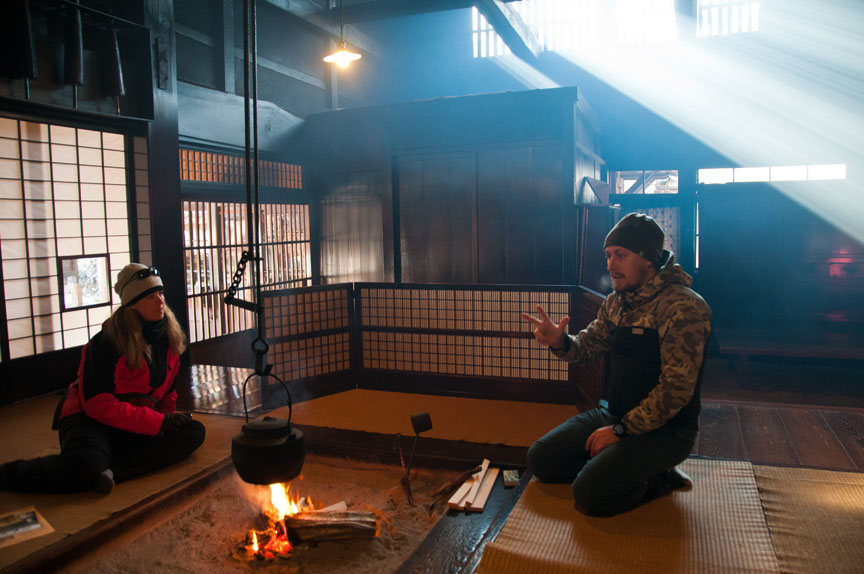
On the third night, we stayed at Iwaya, a ryokan in Kiso-Fukushima. Most of the places stayed en route are either minshuku or ryokan. On arrival, as in the old days of the Nakasendo, guests bathe and change into yukata before having dinner.
As we drive into the hills above Kiso-Fukushima, the snow gets gradually deeper. When the bus can go no farther, we must rely on snowshoes to take us through the thickly forested trail along the old Hida Highway and over the Jizo Pass. The trick to snowshoes is to dig in with your toes when ascending and on the way down with your heels while leaning back.
Once on the Kaida Plateau, we visit a stud farm that is saving the Kiso horse. Now numbering about 130, the species is said to have its origins in the horses of the Mongolian steppes. Views extend to Mt. Ontake in the distance.
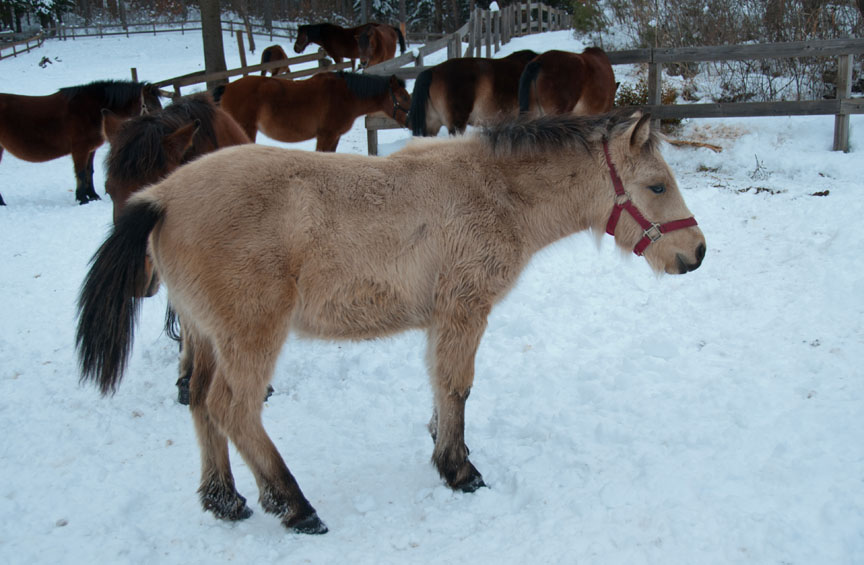
The final full day sees us climb from Yabuhara using a mixture of cleats and snowshoes to cross the Torii Pass. It is named after a Shinto torii gate, one of four that guard the approaches to the sacred 3,067-meter Mt. Ontake. From here it is largely downhill to Narai, the final post town of our tour.
Leaving behind the Nakasendo, we end our tour in Matsumoto, the gateway to the Japanese Alps. It is famous for its castle nicknamed “The Crow Castle,” due to its black walls and roofs looking like the spread wings of a bird. Despite the historic castle, we are suddenly thrust back into modern Japanese city life, leaving the footprints of the past back on the Nakasendo.
ESSENTIALS
It’s possible to walk the Nakesendo throughout the year with the right preparation. In summer, you need to be careful of bears on the route. In winter, the stretches in Nagano Prefecture often experience large amounts of snow and ice, so you should attempt to walk if you have the right equipment and experience or as part of a tour with experienced guides.
At a minimum, you will need cold weather gear, walking poles and snow cleats/crampons. Many tourists only visit the postal towns, so the paths between them are often quiet—even more so in late autumn and winter. Expect to see very few people.
The JR Chuo Honsen line runs between Nagoya and Matsumoto through the Kiso Valley and provides access to trailheads. There are minshuku and ryokan in most of the postal towns.
If you’d like to join a tour, Walk Japan offers tours throughout the year. Their tours bring alive the history of the Nakasendo and offer a window to a disappearing way of rural life.




